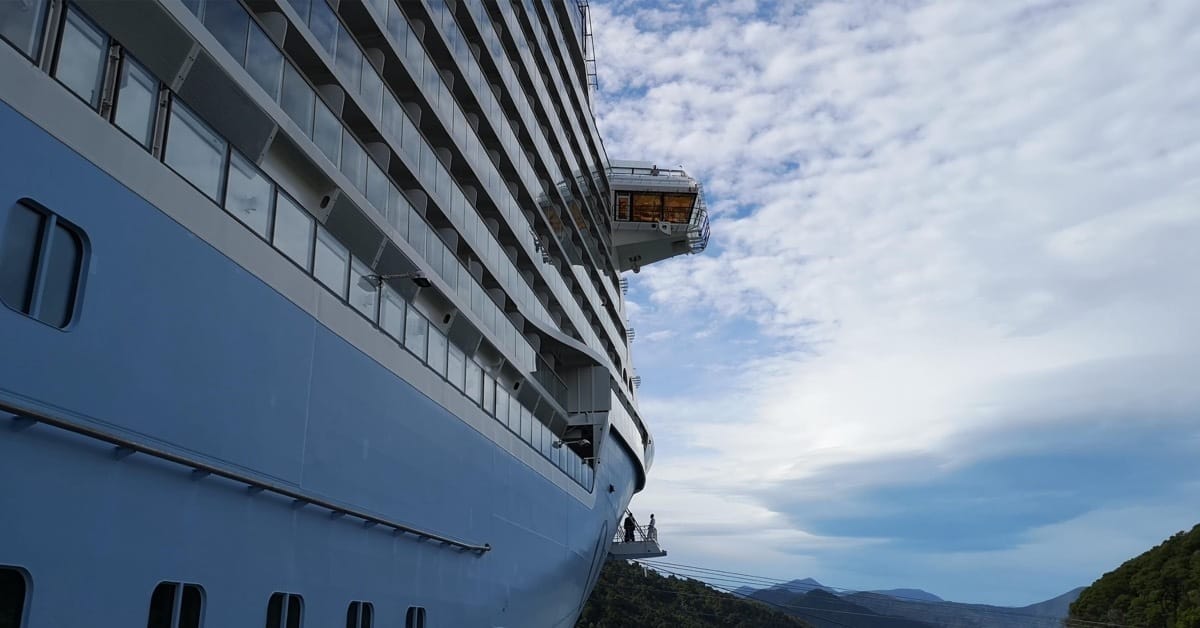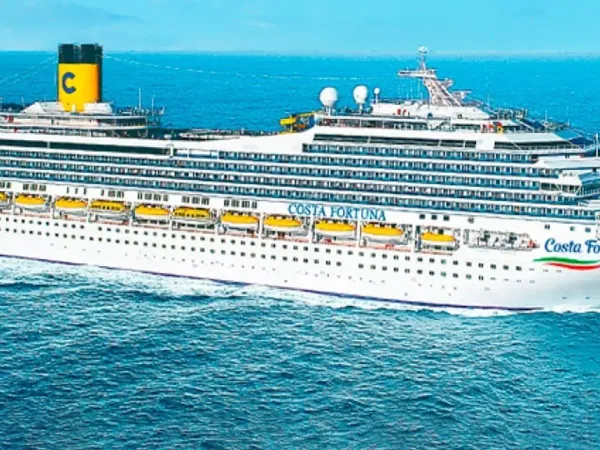Cruise lines oppose New Zealand's fee hike risk

New Zealand's cruise tourism sector is currently facing significant challenges as cruise lines express concern over proposed increases in visitor fees. The New Zealand government is set to implement a 136 percent hike in cruise visitor fees starting September 3, 2024. This proposed increase has ignited fears within the industry that it could lead to further declines in cruise tourism, which is already experiencing a downturn. Joel Katz, Managing Director of Cruise Lines International Association (CLIA) Australasia, has been vocal about the detrimental impact of the fee increase on local businesses and communities, pointing out that New Zealand is projected to see a 22 percent drop in cruise visitors during the upcoming summer season.
This decline in cruise tourism is attributed largely to the high operational costs and complex regulations that make New Zealand one of the most expensive destinations for cruise operations in the world. Katz noted that, prior to the proposed fee hike, the New Zealand tourism industry was already bracing for an estimated loss of at least $157 million due to reduced cruise tourism. The cost crisis, he argues, threatens to overshadow New Zealand's inherent appeal as a desirable cruise destination.
The government has announced a nearly tripled entry fee for international visitors, increasing from NZ$35 to NZ$100 (approximately US$62.20) starting October 1, 2024. This fee increase, packaged as a way for tourists to contribute more effectively to New Zealand's public services, comes at a time when the country’s tourism infrastructure is under strain from visitor numbers. The original fee hasn't sufficiently catered to the environmental management costs arising from tourism, which has prompted this increase.
Despite the government's reassurances that the fee hike is competitive with other global tourism markets, many industry leaders argue that New Zealand's tourism sector is already struggling to recover from the impacts of the pandemic. The Tourism Industry Association of New Zealand has echoed these concerns, stating that higher fees could reduce international competitiveness just as recovery efforts are underway. Rebecca Ingram, the Association's chief executive, highlighted that New Zealand's tourism recovery is lagging in comparison with global peers, which this fee hike threatens to exacerbate.
Data from StatsNZ supports these concerns, showing a 17 percent drop in international travel compared to pre-pandemic levels (June 30, 2019). The reduction in cruise visitors represents a significant opportunity cost for local communities that typically benefit from cruise tourism, which was valued at over $500 million annually prior to the pandemic. The continued increase in fees poses a serious threat to this lucrative revenue stream and undermines the investments made in the cruise tourism sector over the years.
As concerns mount over the implications of these fee changes, it becomes increasingly clear that the future of New Zealand cruise tourism hangs in the balance. The industry awaits government action and advocacy from cruise lines to reconsider the upcoming fee hikes in light of their potential long-term effects on tourism patterns and local economies.
The Economic Impact of Cruise Tourism in New Zealand
Cruise tourism has historically played a pivotal role in New Zealand’s economy. It supports local businesses, creates jobs, and stimulates economic activity in coastal communities. Many towns and cities have come to rely on the influx of cruise passengers who contribute to local businesses, attractions, and services.
Historical Context
Before the pandemic, New Zealand’s cruise tourism sector saw rapid growth, drawing millions of visitors each year. In 2018 alone, approximately 3.9 million passengers were recorded as visiting New Zealand on cruise ships. This influx was a critical component of the tourism sector and contributed substantially to economic growth.
However, the pandemic brought this upward trend to a halt, resulting in a dramatic decline in cruise ship arrivals. With the reopening of borders and tourism resuming, the industry has struggled to reclaim its pre-pandemic status amid rising operational costs and new financial burdens.
The Local Economy
With tourism being New Zealand’s largest export earner, the health of the cruise tourism sector is vital for sustaining the local economy. Many regions, especially those adjacent to popular cruise ports, heavily depend on the economic contributions from cruise visitors.
Local businesses, including restaurants, shops, and tour operators, often see a significant boost in profits during peak cruise seasons. The projected drop in visitor numbers due to increased fees may, therefore, have cascading effects on employment and community-derived income.
The Role of Advocacy Groups
The significant proposed fee changes have drawn the attention of several advocacy groups and associations within the cruise tourism industry. They serve as crucial stakeholders in lobbying for fair policy adjustments and aiming to maintain a healthy balance between environmental stewardship and the economic needs of local populations.
CRUISE Lines International Association (CLIA)
CLIA plays a pivotal role in representing the interests of cruise lines and advocating for sustainable practices within the industry. Their stance against the fee increase emphasizes the need for reasonable operational costs that allow for continued investment in the New Zealand cruise market.
CLIA contends that by reducing the competitiveness of New Zealand as a cruise destination, these fees could ultimately hinder international cruise lines’ ability to maintain regular port calls. The organization stresses that international trends indicate a robust growth in cruise tourism, contrasting sharply with New Zealand's projected decline.
Tourism Industry Association of New Zealand
Similarly, the Tourism Industry Association has been vocal about the concerning implications of fee increases, suggesting they could curtail international arrivals. The association's insights highlight that the recovery trajectory of New Zealand’s tourism industry is already faltering compared to other destinations globally.
They advocate for a more balanced approach to tourism management that accounts for both the environmental needs and the economic pressures faced by local communities. Maintaining attractive conditions for international tourists is of paramount importance to ensure that New Zealand remains a competitive travel option.
Looking Ahead: The Future of Cruise Tourism in New Zealand
As the cruise tourism landscape continues to evolve post-pandemic, the upcoming year could prove critical for New Zealand. The industry’s response to proposed fee hikes will undoubtedly shape the trajectory of cruise tourism in the country and influence policy decisions moving forward.
Industry Adaptation
In light of potential declines in cruise arrivals, industry stakeholders are actively discussing adaptive strategies that might mitigate the adverse effects of increased operating costs. This includes examining innovative ways to enhance the cruise experience for visitors while lowering operational impacts.
Additionally, there is a growing emphasis on diversifying the types of cruise offerings available in New Zealand waters, including boutique and luxury cruises. This could create new opportunities to attract different segments of the traveling public.
Potential Policy Changes
The New Zealand government will likely continue to evaluate the situation within the cruise tourism sector closely. Balancing environmental stewardship and economic sustainability will be critical as they consider the long-term impact of visitor fees and operational measures imposed on cruise lines.
Dialogue between the government and industry stakeholders will be essential for ensuring that any policy changes lead to mutually beneficial outcomes. Enhanced collaboration could foster a sustainable tourism model that protects New Zealand's natural beauty while supporting economic resilience.
Conclusion
New Zealand's cruise tourism industry is currently at a crossroads, facing daunting challenges due to proposed fee hikes by the government. As industry leaders raise alarms about the potential decline in visitor numbers and economic losses, it is evident that a collaborative approach between the government and cruise lines is paramount.
Reevaluating fee structures, promoting sustainable tourism practices, and enhancing the visitor experience will be crucial steps for New Zealand’s cruise sector. Ensuring that the country remains a competitive cruise destination can have lasting positive repercussions for local economies steeped in the tourism sector.
FAQs about New Zealand Cruise Tourism
What is the current state of cruise tourism in New Zealand?
The current state of cruise tourism in New Zealand is concerning, with a projected 22 percent decline in visitors during the upcoming season due to rising costs and proposed fee increases.
Why are cruise fees increasing in New Zealand?
The New Zealand government plans to increase visitor fees to better manage the environmental impacts of tourism and to ensure that public services are adequately funded.
How does cruise tourism affect the local economy in New Zealand?
Cruise tourism significantly impacts the local economy by generating millions in revenue for businesses, creating jobs, and promoting tourism-related activities in coastal communities.
What is CLIA's position on the fee increase?
CLIA has expressed strong opposition to the proposed fee increase, stating it could worsen the existing cost crisis and lead to further declines in cruise visitors.
How are other countries handling similar tourism fee increases?
Many countries are adopting a balanced approach, weighing the need for increased funding for tourism support against the potential impact of higher fees on visitor numbers to ensure competitiveness.




